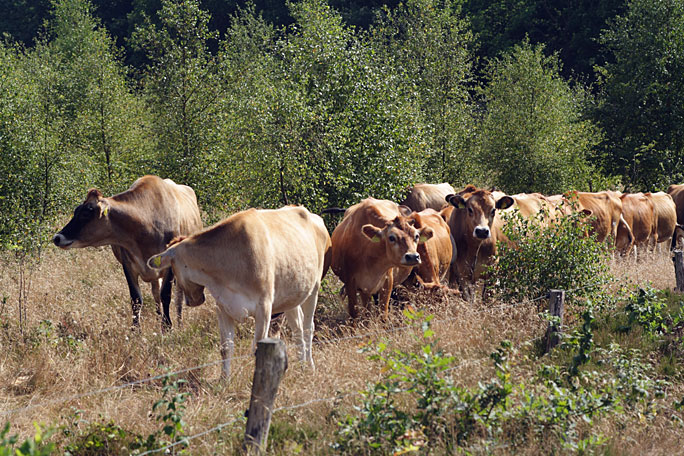The USDA Establishes a New Animal Traceability Rule
A new form of protection will be introduced in 2013 in the fight against disease outbreaks in the transportation of livestock and poultry. Come March, the U.S. Department of Agriculture will establish the final animal traceability (ADT) rule from the Animal and Plant Health Inspection Service (APHIS). This rule will allow the USDA to locate where a disease outbreak among transported animals emerges from, leading to the diseased animals being found and quarantined.
“If we are able to identify where animals have been and be able to quarantine those animals from the area with the disease, the other animals not affected could then move on to their destination,” says Dusty Holley, director of Field Services for the Florida Cattlemen’s Association. “It’s almost preventative maintenance for cattle and poultry, to mitigate the risk if there is a disease outbreak.”
Traveling livestock and poultry will be designated with official identifications such as brands, tattoos, and ear or back tags, as well as given official interstate inspections. Calves 18 months of age or younger and that are traveling for recreational events will be exempted.
Having the traceability rule in place will allow officials and livestock/poultry producers to chart the disease’s path in a herd, leading to less cost and delay of transportation on all involved.
Florida is currently in the early stages of developing its own traceability rule, with the details to be created through workshops and meetings this summer. The projected plan is for the rule to be established later this year and in effect by early 2014. “The Florida version of the traceability rule will be a way for the state to follow along to what other states are doing in terms of their rule while crafting it to fit with what Florida is undergoing. Florida is a cow-pass state where we don’t have many big lots or slaughter facilities, but the vast majority of our cattle are mama cows who live in Florida their whole lives or calves who once weaned go out West,” Dusty states.
Ten other states already have a form of a cattle identification rule in place, and previously identification registration for livestock/poultry was on a voluntary basis through the National Animal Identification System (NAIS). “Most folks recognize the need to have the ability to trace animals, not because of invasion of privacy, but more to find where cattle have been in the midst of a disease outbreak,” Dusty says.
The new traceability rule from the USDA will have the states own and operate their tracing systems, with federal support provided, to give states more flexibility to create systems that best fit their needs.
To find out more about the new traceability rule, visit www.usda.gov or the Florida Department of Agriculture and Consumer Services at www.freshfromflorida.com.
CREDIT
story by BLAIR TOWNLEY

